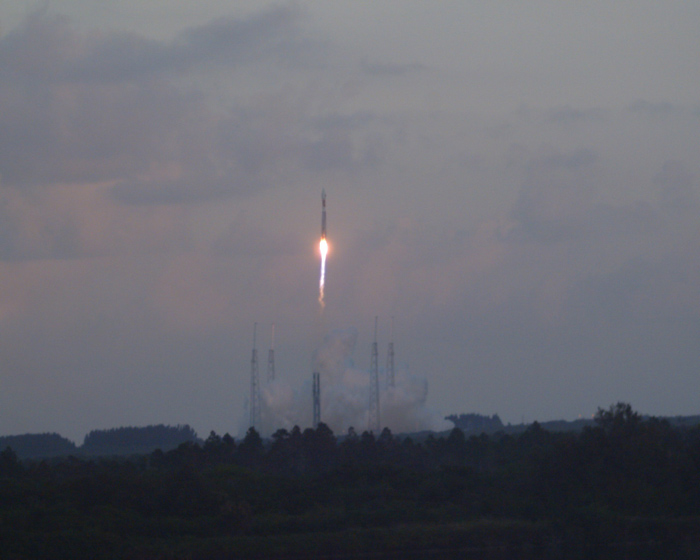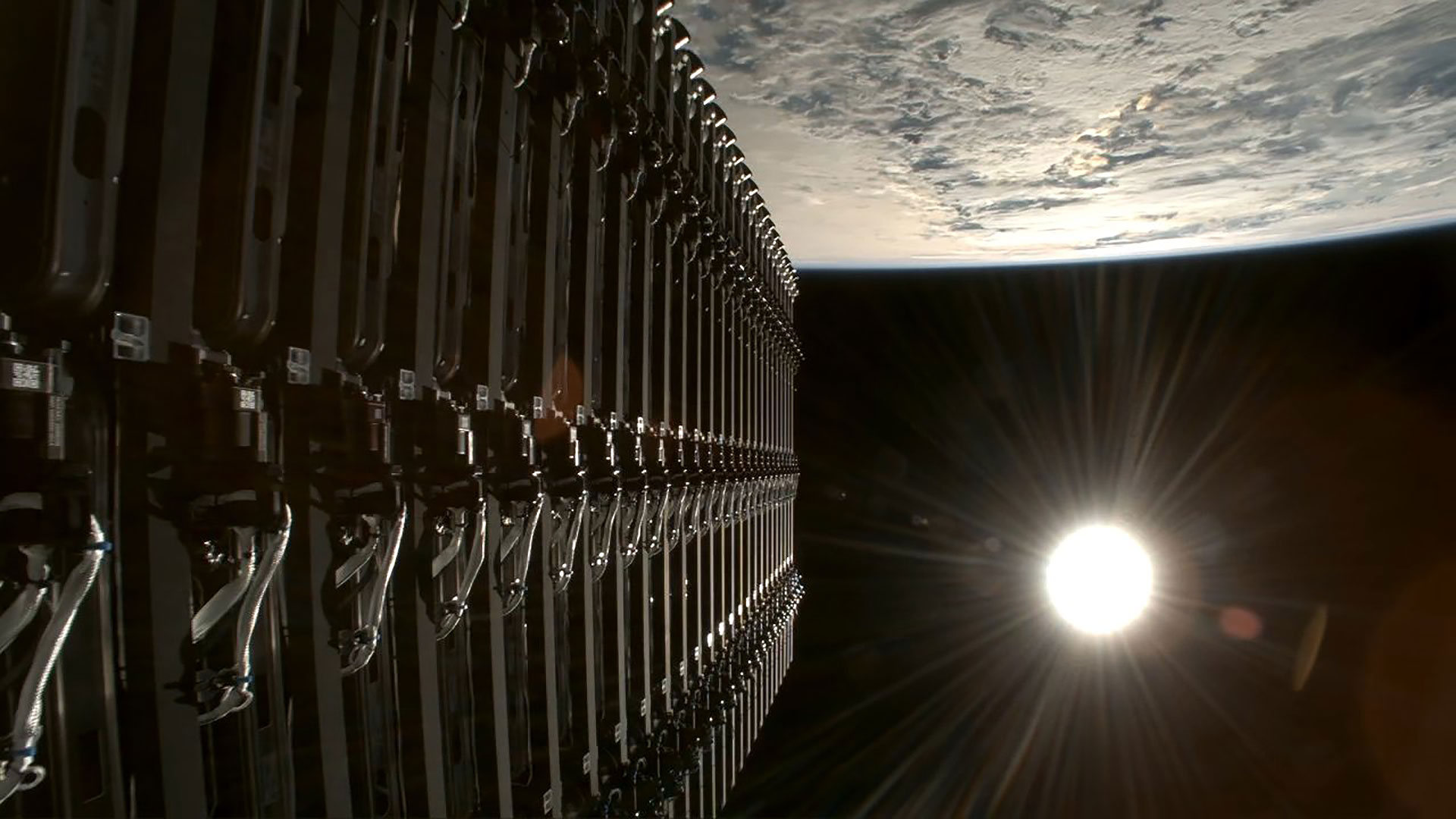Atlas 5 Rocket Orbits Classified U.S. Satellite

Its thunderous departureout of Cape Canaveral on Monday afternoon was hard to miss, but the hush-hushascent of the Atlas 5 rocket was wrapped in an unusual cloak of secrecy as thebooster propelled high above Earth a classified spacecraft designed tocommunicate with spy satellites.
Underorders from the launch's customer -- the U.S. National Reconnaissance Office --the rocket flight entered a news blackout shortly after its 5:05 p.m. EST (2205GMT) liftoff from Complex 41.
The NRO is the governmentagency responsible for the nation's fleet of spy satellites. It has carried outmany launches in recent years, yet none were as secretive as Monday's flight.
After an apparent smoothcountdown, the rocket's Russian-designed RD-180 main engine roared to ignitionto boost the 19-story Atlas skyward on nearly a million pounds of thrust.
Cloud-free skies offeredspectators a clear view of the flickering golden flame as the rocket maneuvereditself on a northeasterly path that would take it right up the EasternSeaboard.
The bronze first stagefired for four minutes before shutting down and separating, leaving thehydrogen-fueled Centaur upper stage to light its RL10 engine and continue thepush to orbit. Shortly after the ignition, the no-longer-needed nose coneshrouding the payload was jettisoned.
That was when updates onthe rocket's trek fell silent. Live reports on the vehicle's health andprogress ceased, preventing any real-time confirmation of key events such asthe Centaur completing its engine burns and deployment of the payload.Typically, such information had flowed freely for NRO launches just like otherNASA, military and commercial rocket flights. But not this time.
Breaking space news, the latest updates on rocket launches, skywatching events and more!
Abouttwo hours after the liftoff, rocket-maker United Launch Alliance issued a pressrelease saying the launch had ended successfully.
"ULA is proud to haveplayed a critical role for this important NRO mission, ensuring that our nationhas the technology and spaceborne assets needed to acquire intelligenceworldwide," said Jim Sponnick, United Launch Alliance vice president ofAtlas programs said in the post-launch news release.
"Close teamwork withthe NRO Office of Space Launch, the U.S. Air Force Launch and Range SystemsWing and the 45th Space Wing at Cape Canaveral made today's successful missionpossible."
Nearly the same time as thepress release was being received, the spent Centaur upper stage was completingits first orbit. The rocket body was dumping residual propellant overboard,creating a stunningly bright fan-shaped cloud visible above eastern NorthAmerica, with sighting reports from Louisiana to Canada. For those in the CapeCanaveral area gazing into the nighttime sky, it was a special treat afterwitnessing the spectacular liftoff just two hours earlier.
Following the tradition ofNRO launches on Atlas rockets, the mission was given a name -- Scorpius. Themission logo was displayed on the rocket's nose cone featuring a scorpion, asaying translated to "Beware Our Sting" and satellites flying indifferent types of orbits around Earth.
Therocket flew into a highly inclined, highly elliptical orbit, dispatching asatellite that's destined for a Molniya-style orbit stretching from about 500miles to 25,000 miles at an inclination of 63 degrees. Most space experts agreethe payload was a data relay satellite that will be used to route informationfrom polar-orbiting photo reconnaissance spacecraft to ground receivers.
Sky-watchers say thegovernment has relay satellite networks flying the highly elliptical orbits aswell as geosynchronous orbit around the planet's equator.
Early versions of theserelay craft were launched starting in the mid-1970s, followed by a second-generationof satellites that were carried aloft on space shuttle missions in 1989, 1990and 1992 and a Titan 4 rocket in 1996.
Atlas rockets deployedmore-recent craft for the Satellite Data System program toward a Molniya-styleorbit in January 1998 and August 2004, and toward a geosynchronous orbit inDecember 2000 and October 2001.
Monday's ascent took anortheast trajectory off the launch pad similar to the earlier Atlas missionsbound for a Molniya orbit, and experts say the liftoff appeared timed tointercept the orbit occupied by the aging satellite lofted by the Titan a dozenyears ago.
It was the 12th flight foran Atlas 5 rocket and the fourth this year.
Launch photos can be seen here.
Next up will be February'smaiden launch from the rocket's West Coast pad at Vandenberg Air Force Base inCalifornia carrying another NRO payload. The next liftoff from the Cape istargeted for March to haul the commercial ICO mobile communications satelliteinto space.
- Looking Back on 50 Years of Spaceflight
- IMAGES: 20 Great Rocket Launches
- All About Satellites
Copyright2007 SpaceflightNow.com, all rights reserved.
Justin Ray is the former editor of the space launch and news site Spaceflight Now, where he covered a wide range of missions by NASA, the U.S. military and space agencies around the world. Justin was space reporter for Florida Today and served as a public affairs intern with Space Launch Delta 45 at what is now the Cape Canaveral Space Force Station before joining the Spaceflight Now team. In 2017, Justin joined the United Launch Alliance team, a commercial launch service provider.

